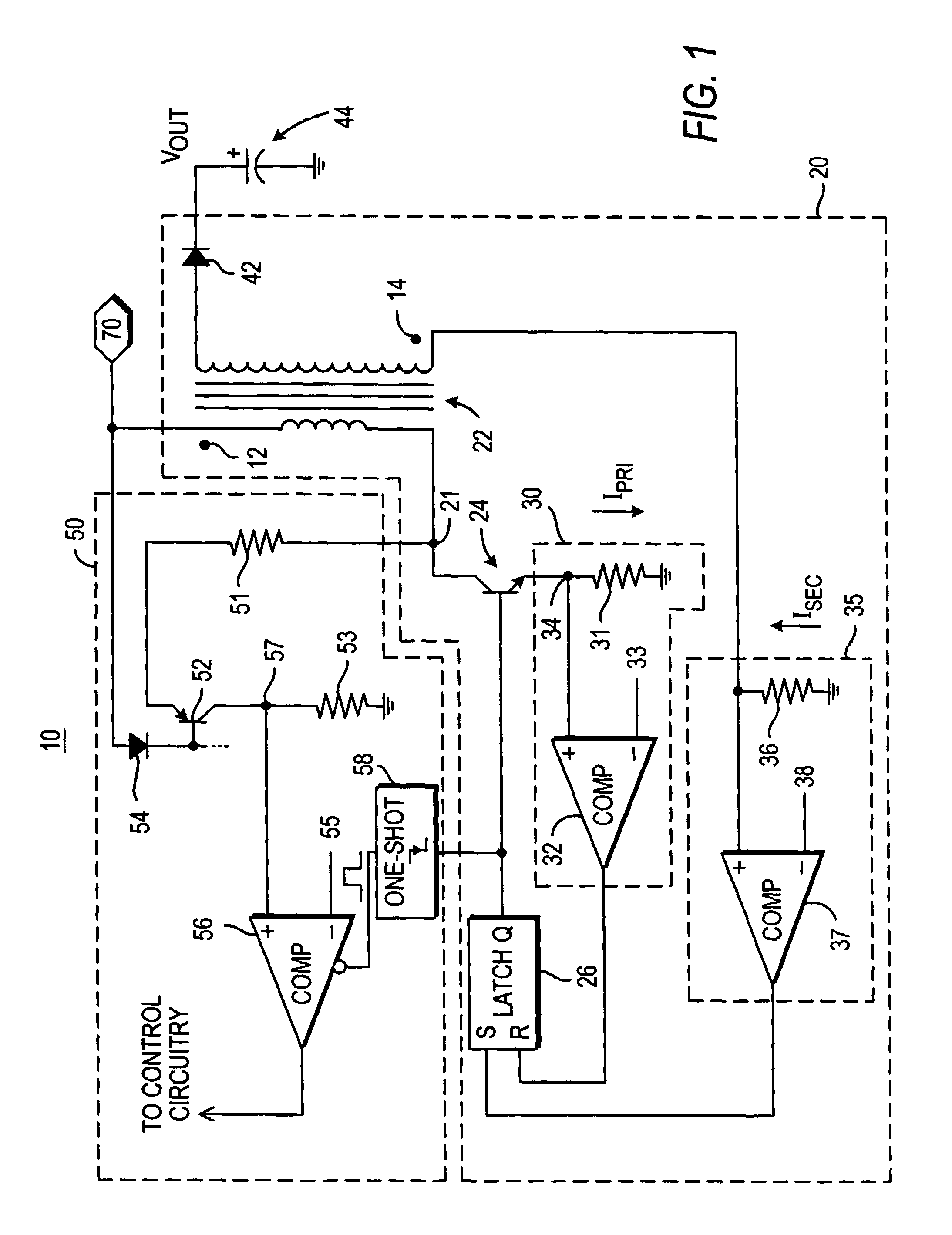Capacitor charging circuitry and methodology implementing controlled on and off time switching
a capacitor and charging circuit technology, applied in the direction of ac-dc conversion, secondary cell charging/discharging, electric variable regulation, etc., can solve the problems of impractical implementation of conventional power switching supplies, inability to adjust the tsub>off/sub>/tsub>on ratio, and inability to adapt to the needs of conventional switching power supplies. , to achieve the effect of fast and efficient power transfer, high degree of flexibility, and flexible and adaptabl
- Summary
- Abstract
- Description
- Claims
- Application Information
AI Technical Summary
Benefits of technology
Problems solved by technology
Method used
Image
Examples
Embodiment Construction
[0028]Circuits and techniques for providing high efficiency charging of capacitive loads are provided. In particular, circuits and techniques are provided for charging capacitive loads in photoflash systems.
[0029]In conventional photoflash capacitor charging circuits, conventional switching power supplies may be implemented to charge an output capacitor to a desired output voltage. The conventional switching power supply may charge the output capacitor by adjusting the TOFF / TON ratio of the switching cycle to obtain the desired output voltage.
[0030]However, conventional photoflash capacitor charging circuits present a number of potential problems, as described above. The conventional capacitor charging circuit may measure the output voltage using a resistor divider, which can produce an undesirable power loss. Other problems may involve the inability of the conventional switching power supply to efficiently charge a capacitive load for continuously varying output voltages. A photofl...
PUM
| Property | Measurement | Unit |
|---|---|---|
| voltage | aaaaa | aaaaa |
| output voltage | aaaaa | aaaaa |
| voltage | aaaaa | aaaaa |
Abstract
Description
Claims
Application Information
 Login to View More
Login to View More - R&D
- Intellectual Property
- Life Sciences
- Materials
- Tech Scout
- Unparalleled Data Quality
- Higher Quality Content
- 60% Fewer Hallucinations
Browse by: Latest US Patents, China's latest patents, Technical Efficacy Thesaurus, Application Domain, Technology Topic, Popular Technical Reports.
© 2025 PatSnap. All rights reserved.Legal|Privacy policy|Modern Slavery Act Transparency Statement|Sitemap|About US| Contact US: help@patsnap.com



